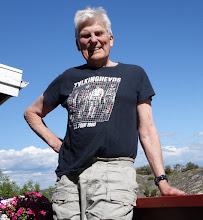NOTE ADDED 11 FEBRUARY 2013 15:30 Central European Time As a result of reading even more NYT comments and replies, I realize that one of the most helpful contributions to discussion of this subject would be to be able to find out, for a given region, where the weakest links are. For example, here in Linköping, I do not recall ever seeing any exposed wires even fairly far out into the suburbs. What I do not know is where the main distribution lines are. Then it would be of interest to have the historical record showing what the weakest links were when there were significant failures. Since my two cities, Linköping, Sweden and Burlington, Vermont are the same size and both experience months of winter weather one could learn something if one had the data. I have often thought that perhaps the very large scale dairy farms northwest of Linköping may storms best, assuming that the gigantic wind turbines that dot that landscape function throughout. A farm that had ground-source geothermal and its own large-scale wind turbine (never seen any that large in Vermont) might do quite well. END OF NOTE. REST FILED 10 FEB.
Therefore since 5 AM Swedish time (23.00 yesterday in those states above) I have been following the Great Snowstorm in the Northeast.
This led me to file a familiar comment on the sad practice in America of hanging residential power lines from wooden or other poles creating a gigantic tangle if you could see it from above.
The good news is that, for the first time, many other NYT readers are delivering the same message I have delivered many times. Just go to the Times (2013-02-09), find the main story about the big storm and go the comments and then Reader Recommendations. There you will find American Mom in first place with her right-on-target comment. Read it and recommend her.
In the Times comments I noted that it is hard to illustrate the situation here in Sweden since if everything is underground, what's to see. Then I looked out and saw that the streetlights were turning on and Eureka, that is what to see.
| Apelgatan kl. 16.00 9/2 2013 So here we are looking down Apple Street (Apelgatan in Swedish). |
Nice streetlights, no wires. Where are the wires? Underneath my feet of course.
No wires to the red house but there is even more to (not) be seen.
The picture below is the front yard of my neighbor at Apelgatan 9. There is something else buried beneath the snow next to his flagpole. The something else is a 120 meter borehole, the key element of Ground Source Geothermal that heats his house and provides hot water as well.
| Look no wires |
No oil tank, no oil truck, no fumes, no nothing.
Just 24/7 renewable energy. My front yard looks
just like his, and there is something buried
under my front yard also. That something
is a pipe through which hot water flows
24/7 to a heat exchanger where the water
to my radiators is heated and to
another heat exchanger that
heats the water
for bathrooms and kitchen.
No oil tank, no hazardous
natural gas pipeline .
.


Larry, I have come to the realization that all the old fashioned wooden poles draped in tangles of wire I see here tells me that the political system does not allow for long range planning and major investments in infra structure.
ReplyDeleteWell, there is a reason for this. The US was electrified long before most other nations. So the technology was that of the early 1900s. In modern new communities, the lines ARE buried (and in a few pricey older suburbs, too), but most of our electric lines date from 100 years ago.
ReplyDeleteLike so much in technology, if you enter later, you benefit from the knowledge and expense of the early adopters.
The problem is the cost of BURYING many millions of miles of electric cable is insanely costly -- who would pay for all that? I mean, it's a great idea. But most of the US is quite built up, not rural and you'd have to dig around homes and businesses to bury the cable. The cost is astronomical.
It's not like it is unheard of here, but you don't see it in older areas in the Northeast or Midwest. Where I lived in Florida (near Orlando) a few years ago, the power lines were all buried and yes, it looked very neat and nice.
I assume in Sweden, you can afford to do this because the government just pays for it, and the people accept or vote for very high taxes to pay for it all. This is much easier if you have less than 9 million people, and they all look and think alike, than in a diverse nation of 311 million.
We OOO PROM TRADING is one of the leading Oil & Gas
ReplyDeletetrading companies in Russia Federation with good business reputation and well experienced in the Petroleum and mining sector. We offer the following trades through our reliable Refineries: D2 DIESEL OIL GOST 305-82, JP54 AVIATION KEROSENE COLONIAL GRADE, UREA 46%/PRILLS, LNG,
LPG, REBCO, MAZUT100 GOST 10585-75/99, AUTOMOTIVE GAS OIL(AGO) ETC. We as well secure allocations from our various Refineries for our numerous buyers who are interested in Spot transactions on FOB/CIF deliveries to any world safe port (AWSP). Our Refineries have their products both
at Russian ports and Rotterdam port.
Best Regards
Mr Andrey Ankudimov
Tel: +7 (987) 897-72-99
Email: serviceandrey.a@inbox.ru
Skype: serviceandrey.a